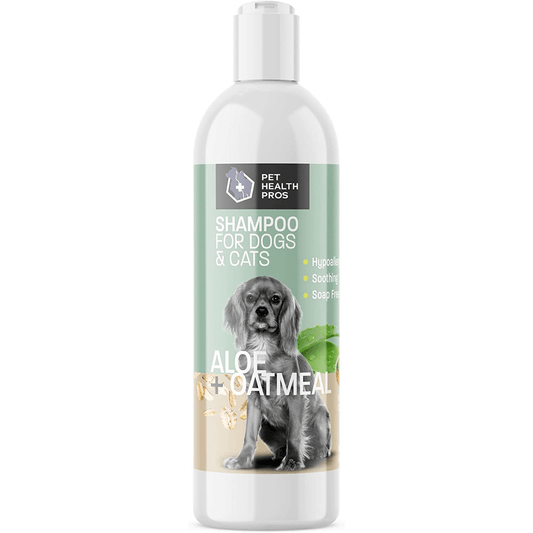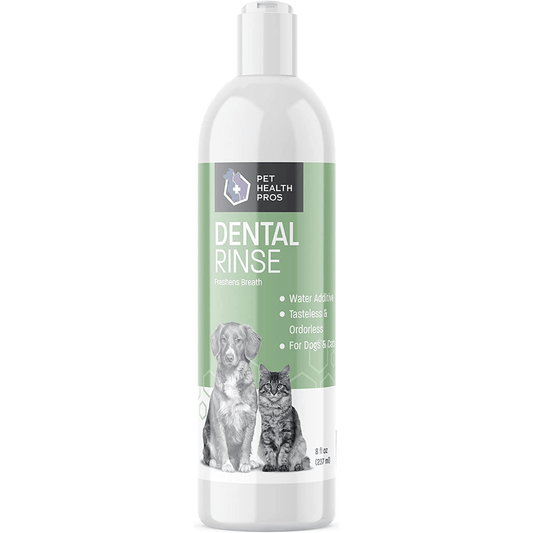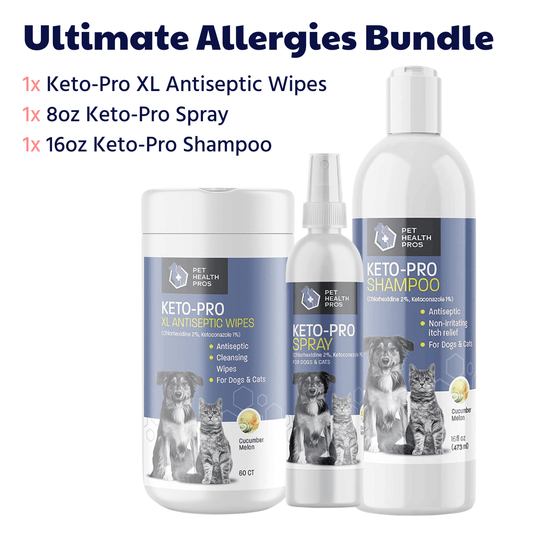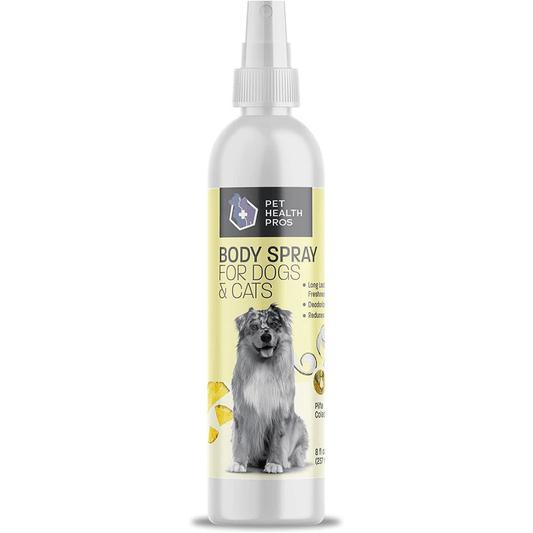Keeping your dog clean and healthy is super important. One way to do that is by using an antiseptic flush. This guide will help you understand what antiseptic flushes are, when to use them, and how to choose the right one for your furry friend.
Key Takeaways
- Antiseptic flushes help clean and heal your dog's skin.
- You can use them to treat common issues like cuts and infections.
- Always talk to your vet before using a new product on your dog.
- Follow the steps carefully to safely apply the flush.
- Watch for any side effects and know when to call the vet.
Understanding Antiseptic Flush for Dogs
What is Antiseptic Flush?
An antiseptic flush is a solution used to clean and disinfect wounds, ears, and skin. It helps remove dirt, debris, and bacteria that can cause infections. These solutions are specially formulated to be safe for pets, including dogs.
Why Use Antiseptic Flush for Dogs?
Using an antiseptic flush can prevent infections and promote faster healing. Dogs often get cuts, scrapes, and other minor injuries that can become infected if not properly cleaned. An antiseptic flush ensures that these wounds are kept clean and free from harmful bacteria.
Common Ingredients in Antiseptic Flush
Antiseptic flushes often contain ingredients like chlorhexidine, alcohol, and iodine. These components are effective in killing bacteria and fungi. Some products also include soothing agents like aloe vera to help reduce irritation. For example, the Covetrus Phyto-Ket Antiseptic Flush is known for its antibacterial and antifungal properties, making it a popular choice for pet owners.
When to Use Antiseptic Flush for Dogs
Signs Your Dog Needs an Antiseptic Flush
Recognizing when your dog needs an antiseptic flush is crucial. Common signs include redness, swelling, or discharge from wounds or skin irritations. If your dog is constantly scratching or licking a particular area, it might be time for an antiseptic flush. Additionally, foul odors from wounds can indicate an infection that needs attention.
Common Conditions Treated
Antiseptic flushes are effective for a variety of conditions. They are commonly used to treat:
- Minor cuts and abrasions
- Hot spots
- Ear infections
- Post-surgical wounds
- Skin infections
Using an antiseptic flush can help prevent these conditions from worsening and promote faster healing.
Consulting Your Veterinarian
Before using an antiseptic flush, it's always best to consult your veterinarian. They can provide guidance on the appropriate type of flush and how often to use it. Veterinarians can also help identify any underlying issues that might be causing your dog's symptoms. If your dog's condition doesn't improve or worsens after using an antiseptic flush, seek professional help immediately.
It's important to monitor your dog's response to the antiseptic flush and follow the veterinarian's instructions carefully. Proper use can make a significant difference in your dog's recovery and overall health.
How to Properly Administer Antiseptic Flush
Step-by-Step Guide
Administering an antiseptic flush to your dog can be straightforward if you follow these steps:
- Gather Your Supplies: Ensure you have the antiseptic flush, cotton balls or gauze, and clean towels.
- Clean the Area: Gently clean the area around the wound or infection with a damp cloth to remove any dirt or debris.
- Apply the Flush: Pour a small amount of the antiseptic flush onto a cotton ball or gauze.
- Clean the Wound: Gently dab the wound or infected area with the soaked cotton ball, ensuring you cover all affected areas.
- Dry the Area: Use a clean towel to gently pat the area dry.
- Dispose of Used Materials: Safely dispose of any used cotton balls or gauze.
Precautions to Take
When using an antiseptic flush, it's important to take certain precautions:
- Avoid Contact with Eyes: Ensure the solution does not come into contact with your dog's eyes.
- Test for Allergies: Before full application, test a small amount on your dog's skin to check for any allergic reactions.
- Follow Instructions: Always follow the instructions provided on the product label.
Tools You Will Need
To properly administer an antiseptic flush, you will need the following tools:
- Antiseptic flush solution
- Cotton balls or gauze
- Clean towels
- Damp cloth
Important: Always consult your veterinarian before starting any new treatment for your dog, especially if they have a pre-existing condition.
Using an antiseptic flush, such as chlorhexidine, can help prevent bacterial and fungal growth that can cause skin infections.
Benefits of Using Antiseptic Flush for Dogs
Promotes Healing
Antiseptic flushes are designed to clean wounds and remove debris, which helps in speeding up the healing process. By keeping the wound clean, it reduces the risk of complications and allows the body to repair itself more efficiently. This is especially important for minor irritation that can otherwise escalate into more serious issues.
Prevents Infections
One of the primary benefits of using an antiseptic flush is its ability to prevent infections. The solution kills bacteria and other pathogens that can cause infections, ensuring that your dog's wounds stay clean and free from harmful microorganisms. This is crucial for maintaining your dog's overall health and well-being.
Improves Overall Skin Health
Regular use of antiseptic flushes can improve your dog's skin health by keeping it clean and free from irritants. This can be particularly beneficial for dogs with sensitive skin or those prone to skin conditions. Consistent use can lead to healthier, more resilient skin, reducing the likelihood of future issues.
Using an antiseptic flush is a simple yet effective way to ensure your dog's wounds heal properly and stay free from infections. It's a small step that can make a big difference in your pet's health.
Choosing the Right Antiseptic Flush for Your Dog
Types of Antiseptic Flushes
There are various types of antiseptic flushes available for dogs. Some are designed specifically for ears, while others are for general skin use. It's important to choose the right type based on your dog's needs. For instance, ear flushes like Pet MD Tris Ear Flush are formulated to clean and remove wax, dirt, and debris from the ears.
Reading Labels and Ingredients
When selecting an antiseptic flush, always read the labels carefully. Look for key ingredients such as chlorhexidine, ketoconazole, and alcohol. These ingredients help in disinfecting and cleaning the affected area. Ketoconazole, for example, is effective against fungal infections.
Top Recommended Products
Here are some top recommended antiseptic flushes for dogs:
- Pet MD Tris Ear Flush: Formulated with ketoconazole, this ear cleaner washes away wax, dirt, and debris.
- Pet Health Pros Dog and Cat Ear Cleaner: This product is easy to use and helps in sanitizing and reducing itchiness.
- Pet Health Pros Advanced Itch Relief: An anti-itch solution that treats skin infections and improves skin health.
Choosing the right antiseptic flush can make a significant difference in your dog's health. Always consult your veterinarian if you're unsure which product to use.
Potential Side Effects and How to Handle Them
Recognizing Side Effects
When using an antiseptic flush on your dog, it's important to be aware of potential side effects. Common side effects may include redness, swelling, or itching at the application site. In some cases, your dog might experience more severe reactions such as vomiting or diarrhea. If you notice any of these symptoms, it's crucial to take action immediately.
Immediate Actions to Take
If your dog shows signs of a negative reaction, you should first stop using the antiseptic flush. Rinse the affected area with clean water to remove any remaining product. You can also apply a cool compress to help reduce swelling and soothe the skin. Keep an eye on your dog for any worsening symptoms.
When to Seek Professional Help
In some cases, side effects can be more serious and require professional attention. If your dog experiences persistent symptoms or severe reactions like difficulty breathing or loss of hearing, contact your veterinarian right away. It's always better to be cautious and seek help if you're unsure about your dog's health.
Always monitor your dog closely after using any new product to ensure they don't have an adverse reaction.
DIY Antiseptic Flush Solutions
Homemade Recipes
Creating your own antiseptic flush for dogs can be both cost-effective and convenient. Here are a few simple recipes you can try at home:
- Basic Antiseptic Solution
- Aloe Vera and Lavender Flush
Pros and Cons of DIY Solutions
Pros:
- Cost-effective
- Customizable ingredients
- Readily available materials
Cons:
- May not be as effective as commercial products
- Requires time to prepare
- Potential for incorrect ingredient ratios
Safety Tips for DIY Antiseptic Flush
When making your own antiseptic flush, it's crucial to follow these safety tips:
- Always use clean containers to avoid contamination.
- Test a small amount on your dog's skin to check for any allergic reactions.
- Store the solution in a cool, dark place to maintain its effectiveness.
Important: Consult your veterinarian before using any homemade solutions to ensure they are safe and appropriate for your dog's specific needs.
Creating your own antiseptic flush solution at home is easier than you think! With just a few simple ingredients, you can help your pet feel better without a trip to the vet. For more tips and detailed guides, visit our website and explore our wide range of pet care products.
Conclusion
Taking care of your dog's health is super important, and using an antiseptic flush can be a big help. It keeps wounds clean and helps them heal faster. Always make sure to follow the instructions and talk to your vet if you're unsure about anything. With the right care, your furry friend can stay happy and healthy. Remember, a little extra effort goes a long way in keeping your dog safe and sound.
Frequently Asked Questions
What is an antiseptic flush for dogs?
An antiseptic flush is a liquid solution used to clean and disinfect wounds or irritated areas on a dog’s skin.
Why should I use an antiseptic flush on my dog?
Using an antiseptic flush helps to prevent infections, promotes healing, and improves the overall health of your dog’s skin.
How often can I use an antiseptic flush on my dog?
It’s best to follow your vet’s advice, but generally, you can use it once or twice a day until the area heals.
Are there any side effects of using an antiseptic flush on dogs?
Some dogs may experience mild irritation or redness. If you notice any severe reactions, contact your vet immediately.
Can I make a homemade antiseptic flush for my dog?
Yes, you can make a simple solution at home, but make sure to follow safe and vet-approved recipes.
When should I consult a vet before using an antiseptic flush?
Consult your vet if your dog has a deep wound, shows signs of severe infection, or if you’re unsure about using the product.









